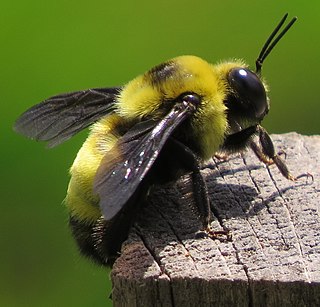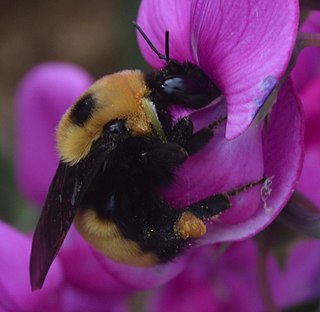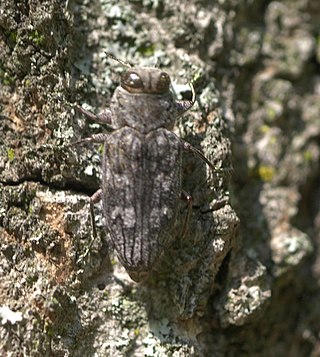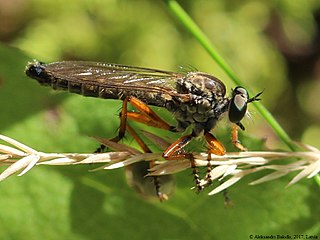
Bombus auricomus is a species of bumblebee known by the common name black and gold bumblebee. It is native to eastern North America, including Ontario in Canada and much of the eastern United States, as far west as the Great Plains.

Bombus nevadensis, the Nevada bumblebee, is a species of bumblebee. It is native to North America, where it occurs from Alaska to California in the west, and east to Wisconsin, and in Arizona, New Mexico, and Mexico.

Conus auricomus, common name the gold-leaf cone, is a species of sea snail, a marine gastropod mollusk in the family Conidae, the cone snails and their allies.

Chrysobothris is a genus of metallic wood-boring beetles in the family Buprestidae. There are at least 690 described species in Chrysobothris.

Ranunculus auricomus, known as goldilocks buttercup or Greenland buttercup, is a perennial species of buttercup native to Eurasia. It is a calcicole typically found in moist woods and at the margins of woods. It is apomictic, and several hundred agamospecies have been recognised.

Parasola auricoma is a species of agaric fungus in the family Psathyrellaceae. First described scientifically in 1886, the species is found in Europe, Japan, and North America. The mushroom was reported in February 2019 in Colombia, in the city of Bogota by the mycologist Juan Camilo Rodriguez Martinez. The small, umbrella-shaped fruit bodies (mushrooms) of the fungus grow in grass or woodchips and are short-lived, usually collapsing with age in a few hours. The caps are up to 6 cm (2.4 in) wide, initially elliptical before flattening out, and colored reddish-brown to greyish, depending on their age and hydration. They are pleated with radial grooves extending from the center to the edge of the cap. The slender, whitish stems are up to 12 cm (4.7 in) long and a few millimeters thick. Microscopically, P. auricoma is characterized by the presence of setae in its cap cuticle. This characteristic, in addition to the relatively large, ellipsoid spores can be used to distinguish it from other morphologically similar Parasola species.

Malacoscylus auricomus is a species of beetle in the family Cerambycidae. It was described by Henry Walter Bates in 1881. It is known from Bolivia and Peru.

Great Thrift Wood is a 14.2-hectare (35-acre) biological Site of Special Scientific Interest in Cox Green in Berkshire. The site is a broadleaved, mixed and yew woodland located in a lowland area. The wood was classed in 1984 as a Site of Special Scientific Interest.

Neomochtherus pallipes, the Devon red-legged robber fly, is a species of robber fly in the family Asilidae.
Neomochtherus comosus is a species of robber flies in the family Asilidae.

Physocephala sagittaria is a species of thick-headed fly in the family Conopidae. Larvae develop and pupate within the bodies of Bombus auricomus bees.

Cytilus is a genus of pill beetles in the family Byrrhidae. There are about eight described species in Cytilus.

Mallophora bomboides, also known as the Florida bee killer, is a predaceous species of robber fly of the family Asilidae that feeds primarily on bumblebees. M. bomboides is a noteworthy instance of Batesian mimicry given its close resemblance to its prey, the bumblebee. These bees are typically found in the Eastern and Southern regions of the United States like South Carolina and Florida.
Neomochtherus latipennis is a species of robber flies in the family Asilidae.
Neomochtherus californicus is a species of robber flies in the family Asilidae.

Neomochtherus geniculatus is a species of fly in the robber fly family, Asilidae.
Animal Ethics is a nonprofit organization formed to promote discussion and debate around issues in animal ethics and to provide information and resources for animal advocates. They also do outreach work in several countries on the issue of speciesism. Their aim is to create a world where moral consideration is extended to all sentient beings. The organization's website covers topics such as speciesism, sentience, veganism and wild animal suffering and has content translated into several languages.

Gunnar Marklund was a Finnish botanist.














